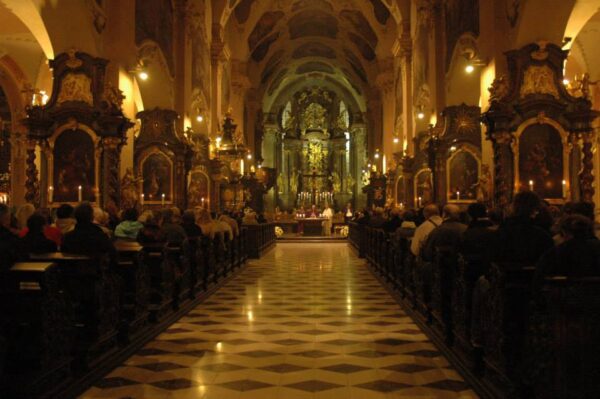Strahov Monastery
Visiting Strahov Monastery when in Prague is a no-brainer. A bit further down the hill, not far from Loreta Square, on the other side of the street towards the wide open green area, you’ll easily notice the two tall spires topped with two golden crosses. The two white towers that carry them are part of another important pilgrimage site with a history of more than 800 years.
Strahov Monastery (Strahovský Klášter) started its long & tumultuous life after a pilgrimage to the Holy Land in 1138 by the Bishop of Olomouc (historical capital of Moravia, in the east of the Czech Republic) who first conceived the idea of establishing a monastery of canons regular in Prague.
With assistance from the Prague rulers and bishops, a monastery was set up in a place called Strahov, near the path leading to the prince’s castle, at a site where guards stood watch (the name Strahov is derived from the Czech word strahovat, to stand guard) but that first monastery failed to prosper. It was not until 1143, when Premonstratensians (Roman Catholic Order of Canons) from the Rhineland arrived in Strahov, that the life of the monastic community started to develop successfully.
The masonry of the first Romanesque monastery was almost over in 1182 making it one of the oldest in the city & the first of its order in the country. Being on an important road that led to the Castle from the west, helped the monastery prosper and quickly become an important cultural center. In 1258 a big fire almost destroyed the whole complex which was soon rebuilt in the Early Gothic style.
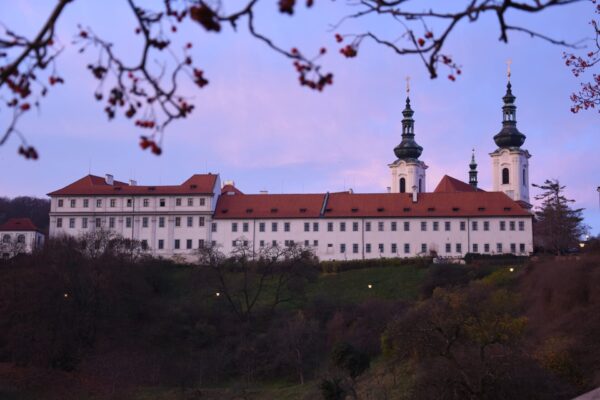
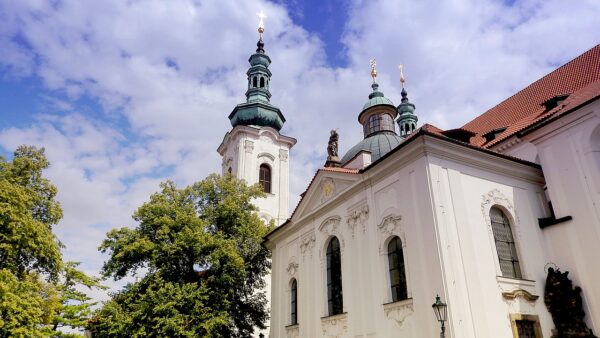
In 1420, the first year of the Hussite Wars the abbey is plundered by the Hussites and falls into a state of decline until the arrival of a new active abbot in 1586. Building works re-commence, a brewery is constructed and the remains of St. Norbert, founder of the order are laid at rest in the abbey church.
The abbey’s rebirth would be again halted by the storms of the Thirty Years’ War (1618-1648) when it was sacked and plundered, this time by a Finnish regiment of the Swedish army who stole many precious objects from the church and manuscript as well as printed books from the library.
Things would forever change in 1670, when Jeroným Hirnheim, a philosopher and theologian became the abbot of Strahov. His new library completed in 1679 would from then on stand as one of the most impressive libraries in the world & make his monastery famous all over the world.
The Theological Hall as it was called (its name derives from the fact that it contains numerous editions of the Bible or parts of the Bible in many languages) was built in Baroque style in the place of an older prestigious room in the Strahov Library while its ceiling frescoes, that took 4 years to complete are inspired from the profession of the librarian.
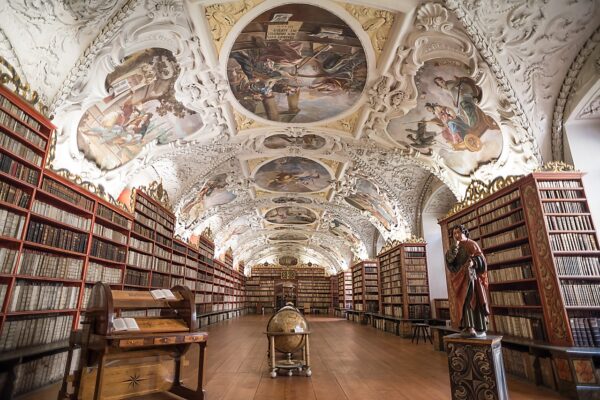
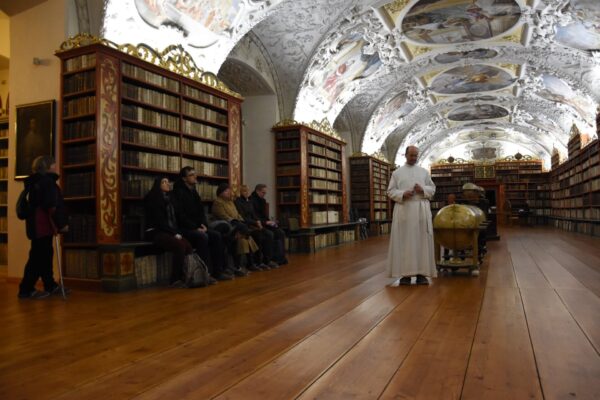
The monastery is further enlarged in Baroque style, a style that would dominate especially after the bombardment of the abbey by the French army in 1742 when most of the Gothic Medieval buildings were rebuilt in Baroque.
In 1782 a new impressive Hall built in Classical style came to supplement the library of the Theological Hall. The 32 meters long & 10 meters width Philosophical Hall was also decorated with beautiful frescoes inspired by the history of mankind and masterfully crafted stucco. Both libraries contain more than 200.000 books, neatly arranged along huge wooden shelves, and masterpieces of decorative woodwork.
Among them many rare volumes and manuscripts, incunabula that go back to the 9th century as well as astrological and geographical globes from the 17th century that are located in the hall.
A Cabinet of Curiosities brought to Strahov from the estate of Karel Jan Erben in 1798 holds a quaint collection that includes: bits of a dodo bird, a large 18th-century electrostatic device, numerous old ocean specimens, insects, minerals, anthropological artifacts, and others.
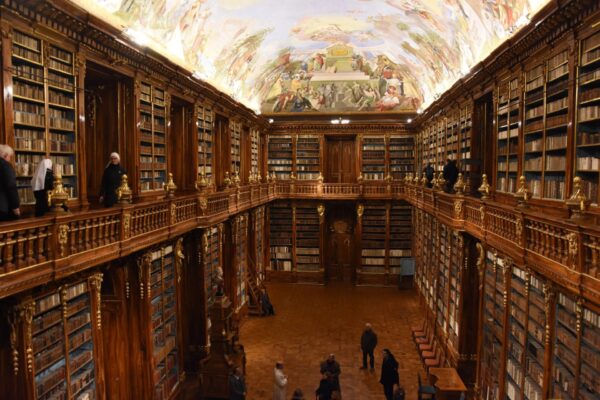
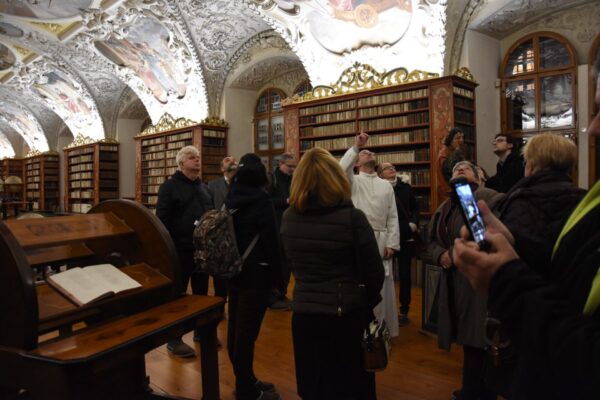
The Baroque Strahov Church, also known as the Basilica of Our Lady is richly decorated with frescoes, stucco, and sculptures from the 18th century and is also famous for its ecclesiastical organ where Mozart played during his visit to the Strahov Monastery in 1787.
The art gallery, Strahovska obrazarna, and the Chapel of Saint Roch complete a unique ensemble of unforgettable historical gems that could easily impress you even if the only sense you were left with was your smell. More

